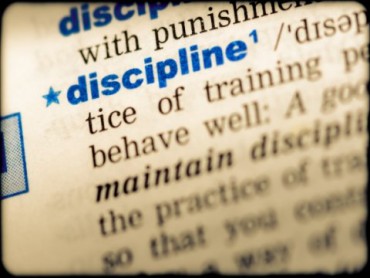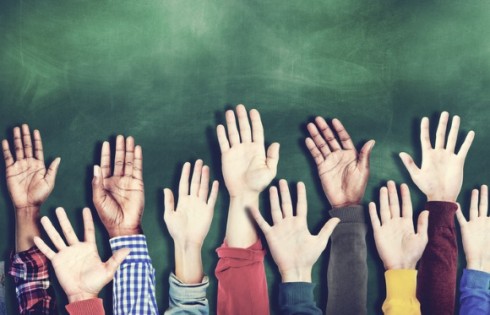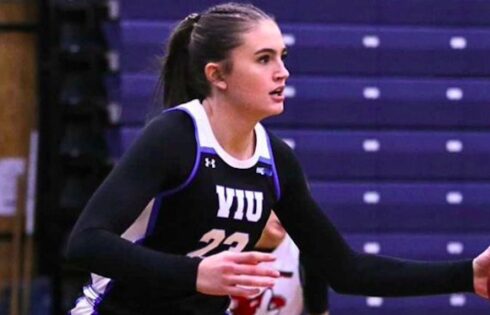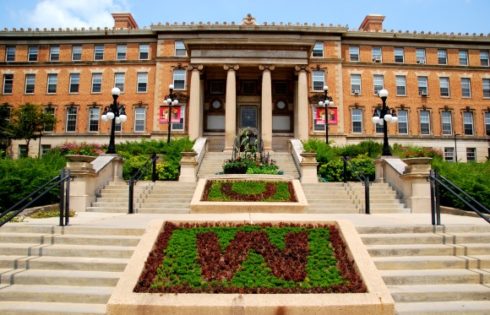
A week and a half ago, the excellent education blog Joanne Jacobs featured a piece on how disruptive peers in a child’s classroom can actually affect the future earnings of those around him/her.
The study shows that
exposure to a disruptive peer in classes of 25 during elementary school reduces earnings at age 26 by 3 to 4 percent. We estimate that differential exposure to children linked to domestic violence explains 5 to 6 percent of the rich-poor earnings gap in our data, and that removing one disruptive peer from a classroom for one year would raise the present discounted value of classmates’ future earnings by $100,000.
While this may be a bit of an eye-opener, what isn’t surprising is what (peer) disruptive behavior also affects: it “lowers high school test scores, college attendance and degree attainment.”
You would think the conventional wisdom would be “if a kid acts up, get him out of class or school.” But, it is not, in our public schools especially.
One popular replacement for traditional discipline is so-called “restorative justice.” Instead of putting disruptive students in detention, in-school suspension, or out-of-school suspension, they’re sat down to discuss their problems … tell why they’re acting out.
(A professor from the University of Arizona even thinks restorative justice is a good idea for rape situations — it “may more accurately represent what victims seek from justice.”)
Policies like this are heavily pushed by the federal Department of Education, largely out of concern for the “disparate impact” more traditional discipline has on African-American students.
Unfortunately, such worries overlook the fact that (many) other African-American students suffer when their disruptive peers are permitted to continually cause chaos in class, not to mention the effects on school culture as a whole.
Teachers from Syracuse, NY, to Los Angeles, to St. Paul, Minnesota have protested that these new “discussion-oriented” policies have led to school-wide pandemonium.
And then there are the policies surrounding children considered “special education.”
Any teacher in a public school is familiar with the term “manifestation.” In a nutshell, it is very difficult for a special education student to be subjected to the usual types of disciplinary measures.
Here’s teacher Darren Miller to better explain:
A couple of the slides discussed “manifestations”. For those of you readers not in the education world, let me share with you a tad of what we have to live with in the schools. In your day and mine, if you got in trouble at school you probably got in twice as much trouble when you got home. This isn’t the case today; no, today parents will come in lawyered up or at least accompanied by a professional “advocate” (or community organizer) and will fight any effort to require their angel to conform to even the most nominal standards of conduct. Schools and districts don’t fight this because it’s “too expensive”; they give in because it’s teachers and other students, not those who give in, who have to live with the repercussions.
RELATED: Suspend disruptive students … or not? Charters vs. public schools
This is especially so in special education, where students have Individual Education Plans (IEPs). If a student receives special education services, a host of different and exciting laws kick in–no doubt they were well-intentioned, but many of them are asinine. They just are. Including the one that talks about “manifestations”.
See, if a “regular ed” students does something stupid, they can be subject to school disciplinary procedures that could involve home suspension. If a special education student does something stupid, though, something that would lead any other student to suspension, there are different rules. If a special education student has over 10 days of suspension in a school year (which should be an indicator of something right there), a meeting with a large number of people must be held for each additional suspension to determine if the misbehavior is a “manifestation” of the student’s disability. If it’s a manifestation, they cannot be suspended.
Miller isn’t unsympathetic to the needs of special ed students; what bothers him is that “merely by virtue of receiving special education services, [special ed students] can completely disrupt a classroom (or, in some cases, an entire school) and [receive] no punishment, short of having to attend yet another meeting.”
“It seems that in the eyes of the law, that kid is the only kid that matters, and none of the other kids in the classroom or school — the ones whose education is being disrupted — does,” he says.
Meanwhile, aside from the study about future earnings, evidence continues to roll in showing that strict — traditional — disciplinary measures in schools actually improves education overall (who knew?).
At struggling schools, the no-excuses educators argued, learning was regularly undermined by chaos, from physical fights to a refusal to follow even basic directions.
. . . At no-excuses schools, students often walk from one class to another in orderly and perfectly silent single-file lines. Detailed instructions dictate precisely how and when students should pay attention, from nodding to folding their hands and legs just so — poses on display in the Success Academy video. Teachers sometimes ban conversation during breakfast or lunch.
RELATED: ‘Liberal discipline policies’ are making schools dangerous
Looking at test scores, all the highest academic results ever produced for poor students and students of color have come from no-excuses schools. Period.
. . . Success Academy charter schools, which ranked in the top 1 percent of all New York schools in math and the top 3 percent in English.
. . . Other life outcomes are impressive, too. Data collected by the KIPP charter school network in 2013 showed that 44 percent of the schools’ graduates go on to earn a four-year degree, compared to just 8 percent of low-income Americans.
Joanne Jacobs adds “The urban no-excuses charters have significantly improved the reading and math skills — and the odds of high school and college graduation — for students from low-income black and Latino families.”
“No other model has done this consistently,” author Elizabeth Green says.
It should come as no surprise that charter schools suspend students more often as “discipline is the first step to learning,” as the New York Post’s Naomi Schaefer Riley writes. New York City’s charters suspend students three times more often than their public counterparts.
However, this Joanne Jacobs highlighted piece is interesting — it shows how some charters like KIPP are actually softening some disciplinary rules, such as requiring a student to remain in the dean’s office if they didn’t have the proper color socks.(They’d be allowed back to class when a parent brought the correct socks.)
I’ll always recall a line the principal who first hired me had used — “rules with a human face.” This would seem to the be the case with the KIPP example here; however, unfortunately, such softening of rules can “snowball” — continue and grow — as school administrators (and education “reformers”) either tire of dealing with what they deem “small” infractions, or don’t consider them offenses at all.
Like The College Fix on Facebook / Follow us on Twitter
RELATED: Will Obama Education Initiative Discipline Students Based On Race?
RELATED: The real ‘elephant in the room’ always seems to avoid the so-called ‘experts’
IMAGE: Shutterstock







Please join the conversation about our stories on Facebook, Twitter, Instagram, Reddit, MeWe, Rumble, Gab, Minds and Gettr.